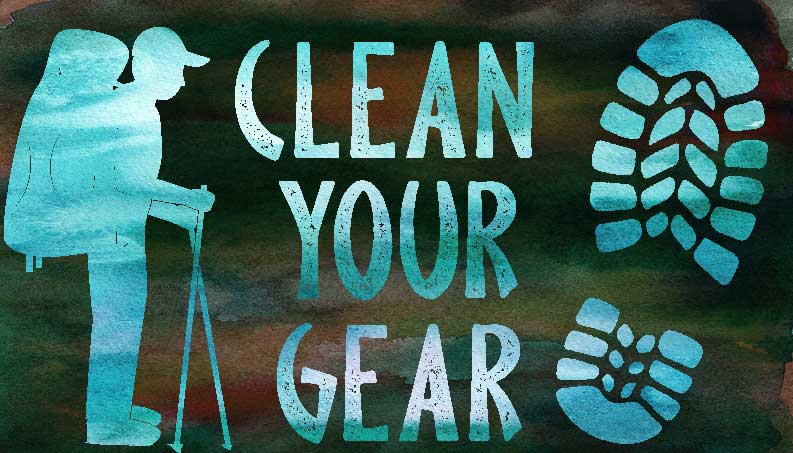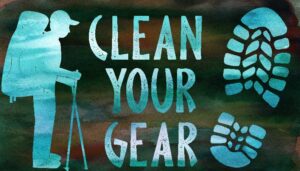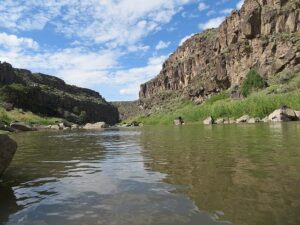One of the most important (and likely most forgotten) parts of being a responsible outdoor adventurer is cleaning your gear before and after each adventure.
While exploring our nation’s wild lands helps us gain appreciation for them it can also put them in added danger. Invasive weeds, insects, and diseases can be introduced to new areas via shoes, clothing, camping gear, boats, vehicles, firewood, etc.
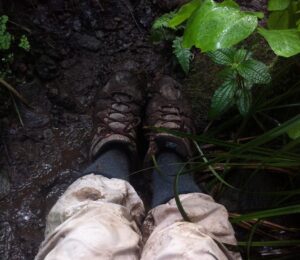 |
| You know it was fun if you get dirty! |
Here are just a few examples of some invasive and destructive threats to our public lands that can be transported to new places by unwary travelers:
- White Nose Syndrome (bats): a fungal disease, likely from Europe, that is killing millions of bats in North America. White Nose Syndrome can be transported from cave to cave by humans on shoes, clothing, or gear.
- Chytrid Fungus (amphibians): a fungal disease that has led to massive population declines and/or extinctions of various amphibian species. It can be transmitted in water or on wet or muddly footwear or gear.
- Rapid Ohia Death (Ohia Trees): a fungal disease that causes the quick death of native hawaiian Ohia trees. It can be transmitted through movement of infected firewood, or on clothing, shoes, gear, or equipment.
- Ranavirus (amphibians, reptiles, and fish): a viral infection that has caused mass mortality events of amphibians and reptiles. It can be spread in water or on wet or muddy footwear or gear.
- Didymo (waterways): a freshwater diatom native to cold regions of North America, northern Europe and Asia. Didymo can form thick mats and smother habitats for stream dwelling insects and fish. It can be spread on felt-sole wading boots, boats and gear.
- Zebra Mussel (waterways): a small freshwater mussel native to Russia and Ukraine that has invaded numerous waterways across the eastern United States. They reproduce and colonize in large numbers, outcompeting native mussels, changing the water quality, and overwhelming waterways. They can be transmitted in water, on boats, and on waders/gear.
- Non-native weeds (public lands): Introduced plants can radically alter native ecosystems by outcompeting and smothering native plants, removing native foods and habitats for wildlife, increasing soil erosion, and degrading aquatic waterways. Weeds can be unintentionally introduced to new areas on hiking boots, clothing, gear, etc.
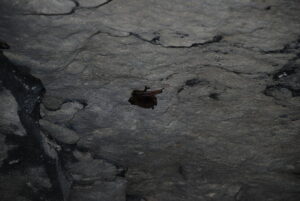
What you can do:
- Clean your gear throroughly. Check and clean your gear before you leave for your next adventure and before you leave to come home. Remove seeds, burrs, mud, soil, and debris.
- Disinfect your footwear. Use a small bottle with isopropyl alcohol or a 10-25% bleach solution and a cleaning brush. The disinfectant should take at least a minute to dry.
- Wear gaiters. Wearing hiking gaiters can help keep seeds, burrs and plants out of your shoes and shoe laces and make cleaning your shoes easier.
- Stay on trails. Staying on designated trails (and out of closed/fragile areas) helps prevent the spread of seeds/diseases away from untrammeled areas.
- Clean your bike tires. Remove mud, soil, rocks and debris from your tires before and after each ride. (Be sure to leave materials on site where they came from.)
- Buy and use firewood locally. Fungi, insects, small critters, and other invasives can be transported in firewood. Buy or obtain firewood as close as possible to the place you need it and leave any left over firewood in the same area instead of taking it home.
- Use weed-free hay. If you are taking horses/llamas/etc on the trail with you buy certified weed-free hay, feed, or straw to prevent invasive weed seeds or root fragments from colonizing new areas.
- Make sure wet equipment dries completely before using it again. A variety of hitchhiking fungus, viruses, and pests can continue to live as long as their environment is wet. Be sure your equipment has enough time to dry completely between your adventures.
- Clean your boat. Clean plants, mud or debris off your boat/canoe/kayak before departing and drain it thoroughly. Dry your boat/canoe/kayak with towels and/or make sure it has enough time to dry between adventures (at least 5 days is recommended).

HELP PROTECT OUR PUBLIC LANDS
CLEAN YOUR GEAR!

